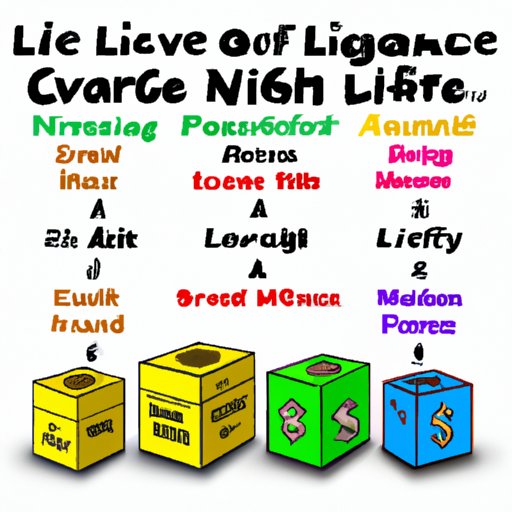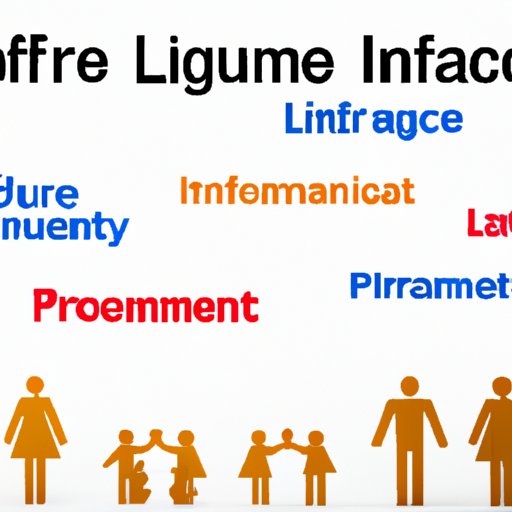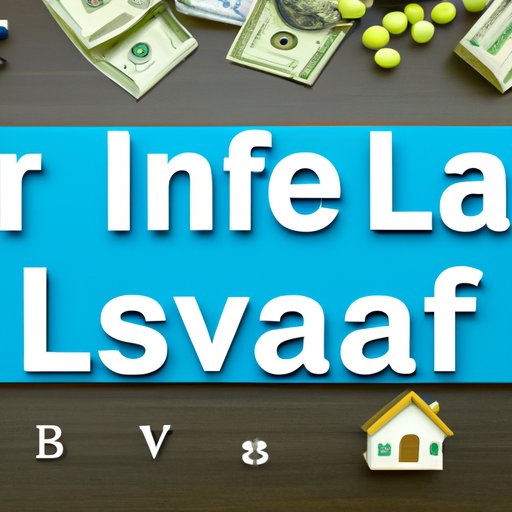Introduction
Life insurance is an important part of financial planning, providing protection for your loved ones in the event of your death. There are several different types of life insurance available, but one of the most popular is cash value life insurance. This type of insurance combines permanent life insurance coverage with a savings component, allowing policyholders to build up a cash value that can be used for various purposes.
Advantages and Disadvantages
Cash value life insurance has both advantages and disadvantages. It’s important to understand both before making a decision about whether it’s right for you.
Benefits of Cash Value Life Insurance
Cash value life insurance has several benefits compared to other types of life insurance. These include:
- A savings component: The cash value portion of the policy allows policyholders to save money over time and use the funds for various purposes, such as supplementing retirement income or paying for long-term care expenses.
- Flexible premiums: Policyholders can adjust their premiums to meet their needs and budget.
- Tax benefits: The cash value portion of the policy grows on a tax-deferred basis, meaning that the policyholder does not have to pay taxes on any earnings until the funds are withdrawn.
- Lifelong protection: Since cash value life insurance is a permanent policy, it provides lifelong protection for the policyholder and their family.
Drawbacks of Cash Value Life Insurance
In addition to the benefits, there are some drawbacks to consider when purchasing cash value life insurance. These include:
- Higher premiums: Cash value life insurance policies typically have higher premiums than other types of life insurance, such as term life insurance.
- Investment risk: The cash value portion of the policy is invested in the stock market, which carries a certain amount of risk. If the investments don’t perform well, the policyholder could lose some or all of their saved funds.
- Surrender charges: If the policyholder decides to cancel their policy before the end of the term, they may be subject to surrender charges.

Different Types of Cash Value Life Insurance
There are three main types of cash value life insurance: whole life, universal life, and variable life.
Whole Life Insurance
Whole life insurance is the most common type of cash value life insurance. This type of policy combines permanent life insurance coverage with a savings component known as the cash value. The cash value grows at a guaranteed rate and can be accessed by the policyholder through loans or withdrawals.
Universal Life Insurance
Universal life insurance is similar to whole life insurance, but it offers more flexibility in terms of premiums and death benefit amounts. Premiums can be adjusted to meet the policyholder’s changing needs, and the death benefit can be increased or decreased depending on the policyholder’s circumstances.
Variable Life Insurance
Variable life insurance is another type of cash value life insurance. With this type of policy, the cash value is invested in the stock market, so the rate of return is not guaranteed. This type of policy carries more risk than other types of life insurance, but it also has the potential to earn higher returns.
Investment Component of Cash Value Life Insurance
The investment component of cash value life insurance is one of the main benefits of this type of policy. Here’s how it works.
How Cash Value is Invested
The cash value portion of the policy is invested in stocks, bonds, mutual funds, and other investment vehicles. The rate of return is determined by the performance of the underlying investments, so it is not guaranteed. However, the policyholder can choose from a variety of investments in order to diversify their portfolio and reduce their risk.
Tax Implications
The cash value portion of the policy grows on a tax-deferred basis, meaning that the policyholder does not have to pay taxes on any earnings until the funds are withdrawn. This can provide significant tax savings over the life of the policy.

Comparison to Other Forms of Life Insurance
Cash value life insurance is just one type of life insurance. Here’s a look at how it compares to other forms of life insurance.
Term Life Insurance
Term life insurance is the simplest and most affordable type of life insurance. It provides death benefit protection for a specific period of time, usually 10, 20, or 30 years. Unlike cash value life insurance, it does not have a savings component, so the premiums are generally lower.
Final Expense Insurance
Final expense insurance is a type of life insurance designed to cover funeral and burial costs. It is typically much less expensive than other types of life insurance, but it does not provide any cash value or savings component.
Conclusion
Cash value life insurance can be a great option for those looking for lifelong protection and a way to save for the future. It offers many advantages, such as a savings component, flexible premiums, and tax benefits. However, it also has some drawbacks to consider, such as higher premiums, investment risk, and surrender charges. Ultimately, it’s important to weigh the pros and cons carefully before deciding if cash value life insurance is right for you.
(Note: Is this article not meeting your expectations? Do you have knowledge or insights to share? Unlock new opportunities and expand your reach by joining our authors team. Click Registration to join us and share your expertise with our readers.)
